Germinating pepper seeds takes patience. Unlike fast-germinating plants like basil or broccoli, pepper seeds can take 2-3 weeks to germinate under ideal conditions. Older seeds may take even longer. In this article, I will share our method for how to germinate pepper seeds, fast!
With over 10 years of experience growing peppers from seed, I can share my tried and true technique for how to sprout pepper seeds quickly. I’ll outline the ideal conditions for germination, and then show you what tools are needed to achieve them.
How To Germinate Pepper Seeds (Video):
How Long Do Pepper Seeds Take To Germinate?
First, let’s set some reasonable expectations. How long will it realistically take for pepper seeds to germinate? This will depend on the variety of pepper, the age of the seeds, and the conditions under which the seeds are germinated.
Generally speaking, pepper seeds take 1-2 weeks to germinate. This can stretch to 3 or 4 weeks for hotter varieties like ghost peppers, or for seeds that are over 1 year old. Certain varieties may take longer, but under ideal conditions, most seeds should germinate within 2 weeks of planting.
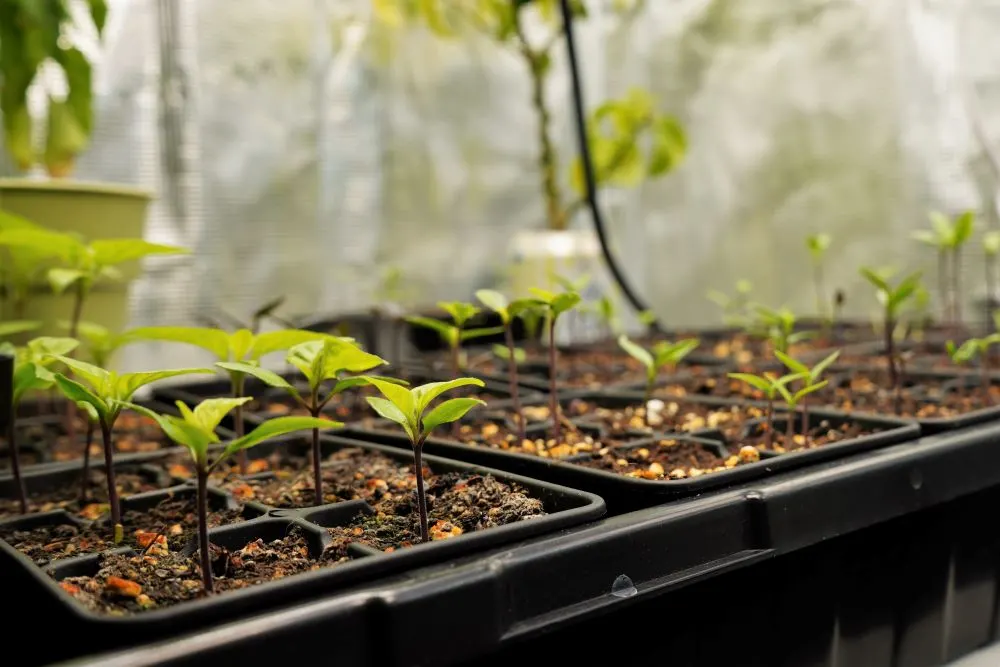
The longer the seeds take to germinate, the higher the risk of developing mold, damping off, and other issues. For this reason, I recommend doing everything possible to speed up the sprouting process.
How to Germinate Pepper Seeds (Steps)
With some pepper seeds in hand, you’re ready to get planting. But first, always make sure you are starting your seeds at the right time of the year.
Planting supplies:
- Pepper seeds
- Potting soil or seed starter mix
- Seed starting pots and humidity dome
- Seedling heat mat (optional but recommended)
- Spray bottle with water
While our method does require a few additional items, the results are worth it. We consistently achieve near-perfect germination rates with our setup, year after year!
- Pre-moisten soil. The first step is to pre-mix your soil with water. Use a clean container and add water gradually, mixing thoroughly. This ensures that the soil does not become hydrophobic.
- Fill containers with soil. Add the pre-moistened mix to seed starting containers, filling to about ¼” from the top. Use medium pressure to pack down the seed starter mix.
- Poke small hole in the soil. Using a pen or pencil, poke a small hole about ⅛-¼” deep in the center of each container that will be planted.
- Bury seed ¼” deep. Add 1-2 seeds per hole. I prefer to plant a few seeds in each cell to ensure that at least one plant germinates in each pot (though we usually end up with multiple). Bury each seed with ¼” of soil.
- Spritz with water. Spritz the soil’s surface, making sure the seeds are well moistened.
- Place tray on seedling heat mat. Place the planted seed trays onto a seed heating mat and set the temperature to 80°F (27°C). More about seedling heat mats below. If you don’t have one, place the seeds in a warm location, like above the refrigerator or near a heater. Light is not necessary for germination.
- Cover with humidity dome. Keep the environment humid and spritz the surface of your seeds daily to prevent them from drying out. Never let your seeds become dry before sprouting!
- Fan out tray daily. Remove the humidity dome daily to refresh the air.
- Seeds should sprout in 7-10 days. Some seeds may take longer based on age or variety, but most of our pepper seeds sprout within 7 days, including superhots.
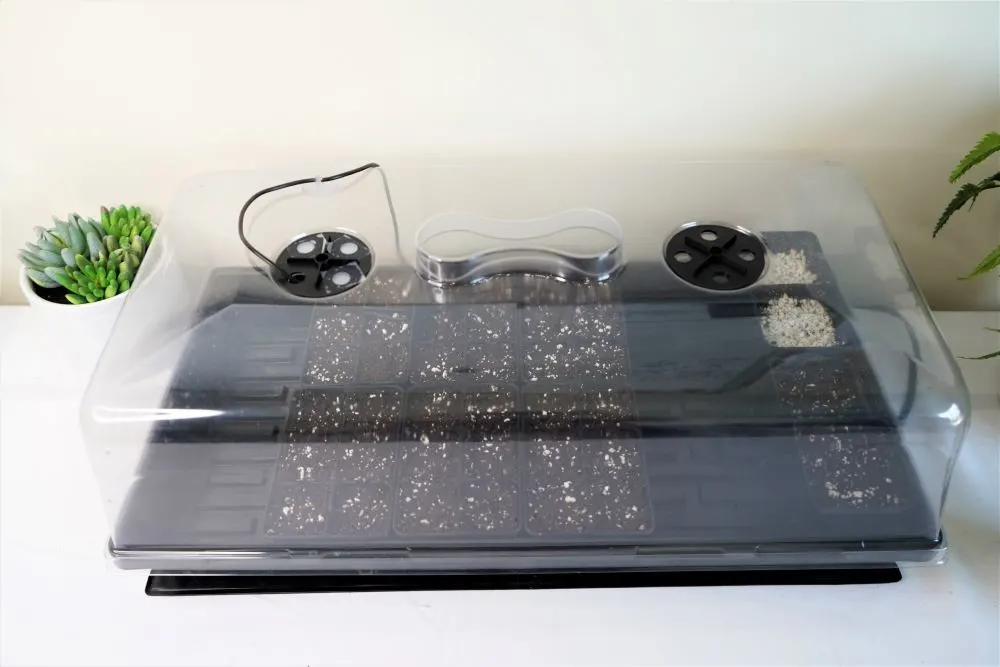
This is our basic process for germinating pepper seeds indoors. There are a few important things at play, so let’s talk about what is making our seeds germinate fast.
Tips for Faster Pepper Germination
With the basic steps for germinating pepper seeds covered, let’s talk about some tried-and-true tips for faster and more reliable germination. Overall, the goal is to keep the environment warm, moist, and well-ventilated until the seeds sprout.
Use a seed heating mat
Temperature is potentially the most important factor in successful seed germination. Most homes are not kept warm enough to be in the ideal temperature range for pepper seed germination.
Pepper seeds will germinate fastest when the soil is between 80-90°F (27-32°C). Most of our pepper seeds (even superhots) sprout in just 4-7 days after planting thanks to keeping the temperatures in this range.
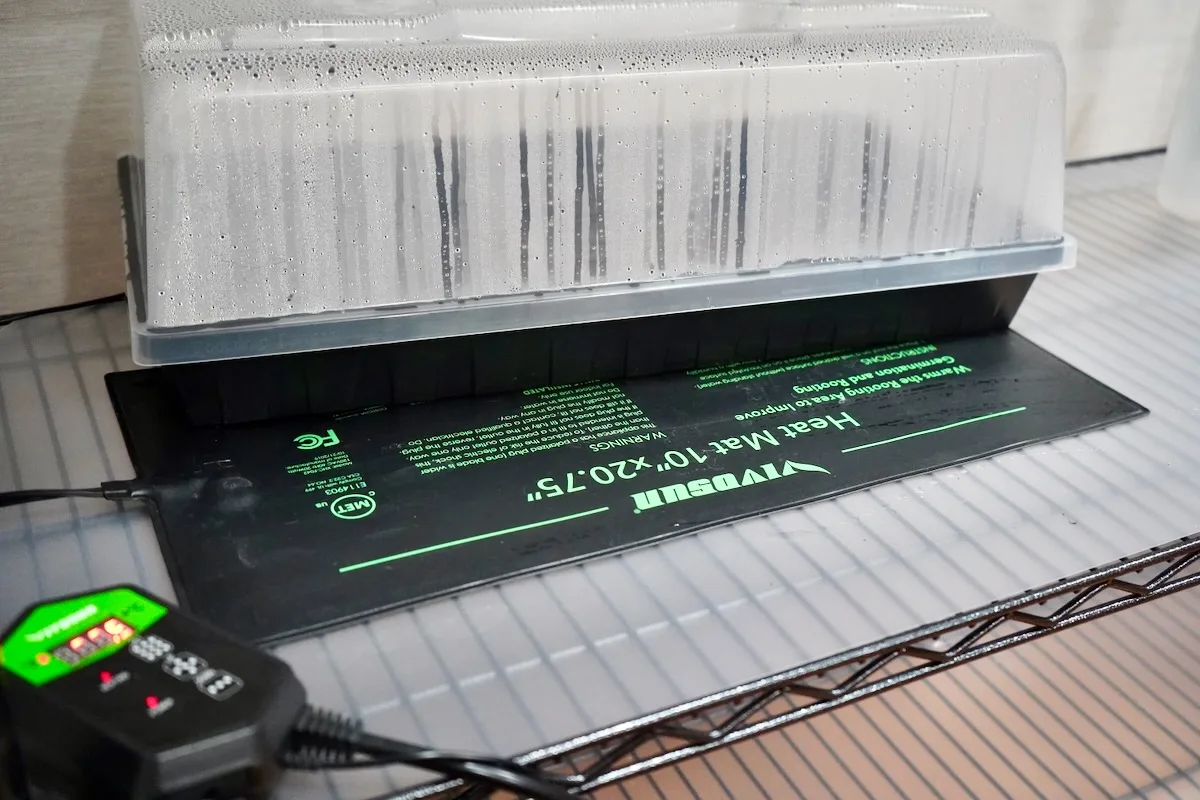
Make sure to choose a mat that has a thermostat! otherwise, the mat will be on constantly, potentially over-heating the soil.
Setup is pretty simple. You place the seed trays on top of the mat, place the metal probe into the soil (this measures the temperature), and set a desired temperature on the thermostat control unit.
The unit will then begin heating until the set temperature is reached. I usually keep ours set at 80°F, but feel free to experiment with what works best for you.
“Increasing soil temperature is the single best method for speeding up pepper seed germination.”
This knowledge is a great asset for hot pepper growers. If you’re growing Carolina reapers or any of the superhot varieties, you will definitely want one of these!
Keep it humid
Moisture is another vital component of successful germination. If your pepper seeds dry out at any time during germination, the seed may fail to sprout. Keep humidity high to help avoid this problem.
Most seed starting trays come with a humidity dome like the one pictured below. This locks in any evaporated moisture and keeps the air at nearly 100% relative humidity.
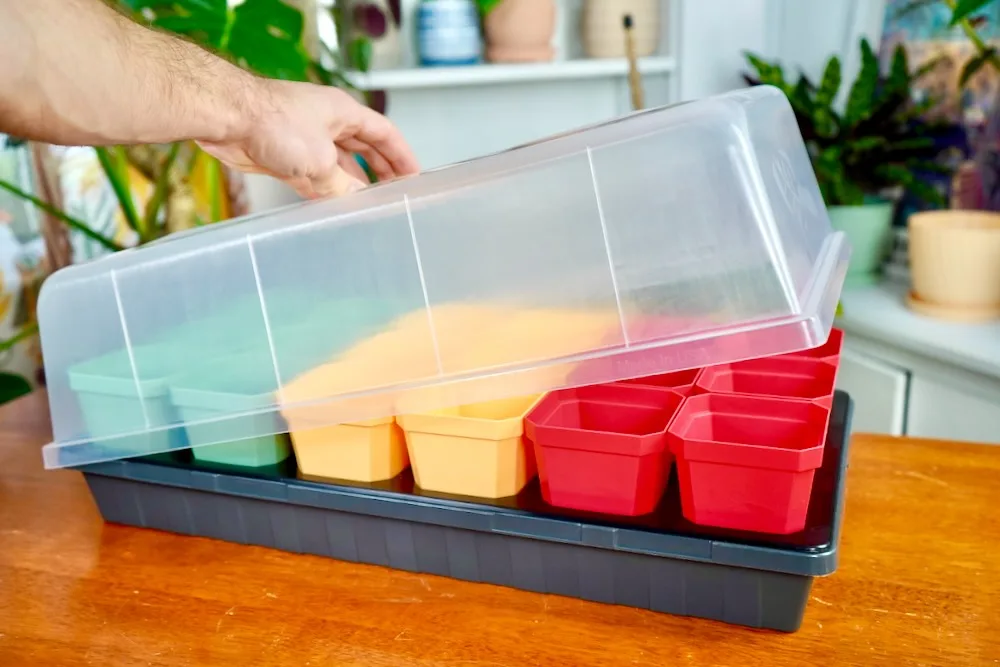
We love Bootstrap Farmer’s high-quality growing supplies. If you want to ‘buy it for life,’ get your supplies from them.
In addition to using a humidity dome, we also recommend spritzing the soil with water daily to prevent drying out. Before the seeds sprout, there is really no need to bottom water, just a few sprays of water directly on the surface to re-hydrate the seed.
Tip: Avoid seed coats getting stuck on the seedlings by keeping the soil medium moist at all times during germination.
We also used these seed trays, but some of them cracked after just one year of use. If you will be growing plants for many years to come, higher quality trays may be worth the investment.
After your pepper seeds have sprouted, the dome should be removed to allow better aeration. Some plant varieties like to be kept in high humidity after sprouting, but not peppers.
Aerate regularly
If your seeds are kept under a humidity dome, they will need a refresh of air every once in a while. Seed germination requires oxygen, so make sure that you remove the dome and allow some fresh air to reach the soil.
Since the seeds don’t use much oxygen, this can be done every other day or so until the seeds sprout.
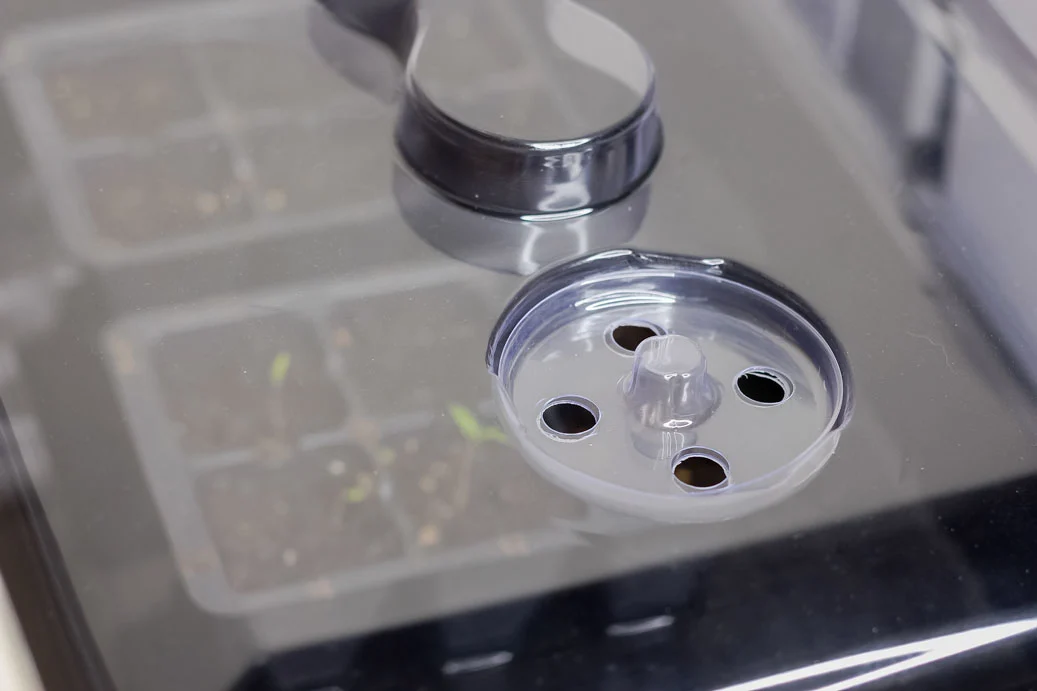
Tip: Use the dome vents to allow some air to enter the seed tray. You can also run a desk fan on low for a few hours per day in the room to circulate the air.
Plant in seed starter mix
Seed starter mixes are specially formulated mixtures for germinating seeds. They generally have no plant nutrients added and have a fluffy texture good aeration. You’ll see peat moss, vermiculite, and perlite as common ingredients in these starter mixes.
Using potting soil to start seeds can work fine, but you run the risk of burning seedlings when they emerge or not allowing enough oxygen to reach the seeds for germination.
Once the seeds sprout, they should be moved to nutrient-rich soil. Follow our guide to starting pepper plants from seed for the next steps after germination.
The paper towel method
If you are having difficulty sprouting your seeds quickly, some growers suggest the paper towel method. However, I wouldn’t recommend this technique. We have never had any trouble germinating our seeds directly in soil or seed starter mix.
If you are having difficulty germinating, consider the age of the seeds. If they are very old, or were not stored properly, they may not be viable, or may take longer to sprout.
Learn more about saving pepper seeds here.
Note: We only recommend trying the paper towel method as a last resort. We have had better success sprouting pepper seeds by planting directly in soil with a heating mat. If you don’t have a heating mat, try above the refrigerator or near a heat source for more warmth.
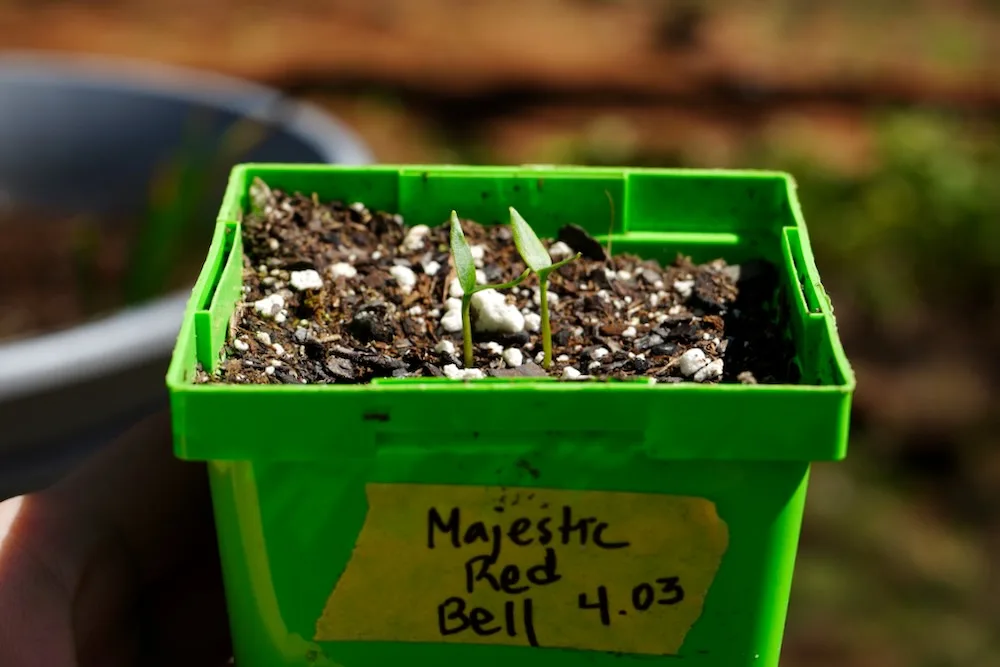
After your seeds germinate, give them plenty of light. Learn more about the next steps for pepper plant care here.
I hope this article helps you achieve a high germination rate for this year’s pepper seeds. Sprouting pepper seeds is an exciting accomplishment, just be sure to check in every day on progress.
Good luck, and feel free to share any other pepper seed germination tips you may have below!

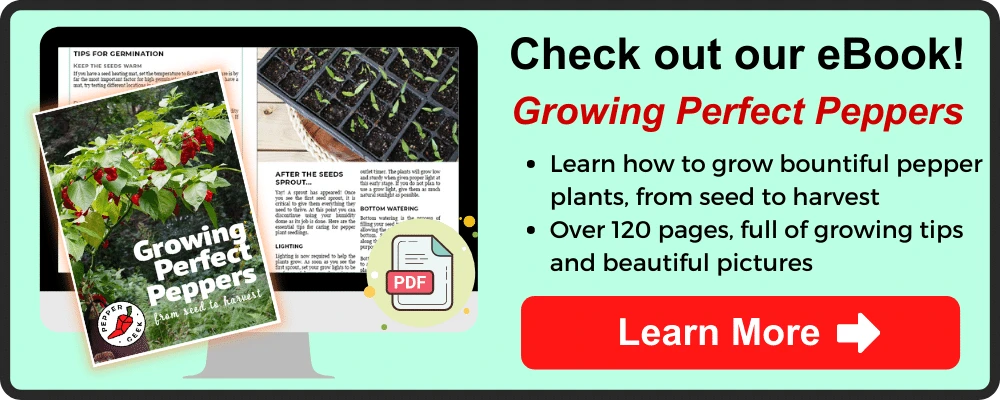


Cindy
Saturday 23rd of March 2024
My pepper plant sprouted like 4 days ago and my house lost power. Temps got down to around 53 degrees farenheit for a night. Will my peppers be stunted after that?
peppergeek
Monday 25th of March 2024
No, a single night at that temp shouldn't be too harmful!
neil
Tuesday 12th of March 2024
my peppers came up on time with heat mat and the stopped growing even after repotting in fresh potting soil. keep in a small green house during the day but no growth. what fertilizer can i use to kick start?
peppergeek
Wednesday 20th of March 2024
I'd go with something nitrogen-rich, but don't over feed. Miracle gro organics works for us, or Alaska fish.
Lester
Monday 11th of March 2024
When germinating pepper seeds with the paper towel method, should the paper towel/baggies with the seeds be exposed to light or kept in darkness? Every source I find has a different opinion on this topic.
Lester
Monday 11th of March 2024
@peppergeek, Thank you sir! I love your youtube channel btw!!
peppergeek
Monday 11th of March 2024
No need for light during germination. I would focus on keeping them warm, ideally around 80-90°F
David
Sunday 10th of March 2024
I always put my cayenne and okra seeds in the freezer for a couple of days, then soak them in water for another 1 to 2 days, then plant outside about the middle of April. Most are sprouting within 4 to 6 days...
donald boots
Sunday 10th of March 2024
ill try your method i always use paper towel. i know exactly which ones germinate and when.